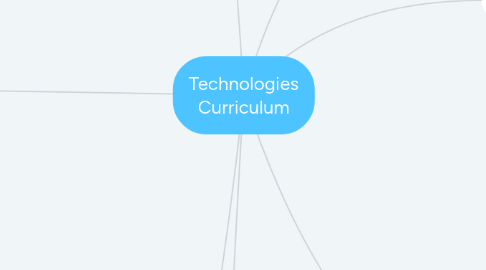
1. Aims
1.1. Design and Technologies
1.1.1. develop confidence as critical users of technologies and designers and producers of designed solutions
1.1.2. investigate, generate and critique innovative and ethical designed solutions for sustainable futures
1.1.3. use design and systems thinking to generate design ideas and communicate these to a range of audiences
1.1.4. produce designed solutions suitable for a range of technologies contexts by selecting and manipulating a range of materials, systems, components, tools and equipment creatively, competently and safely; and managing processes
1.1.5. evaluate processes and designed solutions and transfer knowledge and skills to new situations
1.1.6. understand the roles and responsibilities of people in design and technologies occupations and how they contribute to society.
1.2. Digital technologies
1.2.1. design, create, manage and evaluate sustainable and innovative digital solutions to meet and redefine current and future needs
1.2.2. use computational thinking and the key concepts of abstraction; data collection, representation and interpretation; specification, algorithms and implementation to create digital solutions
1.2.3. confidently use digital systems to efficiently and effectively automate the transformation of data into information and to creatively communicate ideas in a range of settings
1.2.4. apply protocols and legal practices that support safe, ethical and respectful communications and collaboration with known and unknown audiences
1.2.5. apply systems thinking to monitor, analyse, predict and shape the interactions within and between information systems and the impact of these systems on individuals, societies, economies and environments.
2. Organisation
2.1. In Year 9 and 10, student access to technologies subjects will be determined by school authorities.
2.2. It is written on the basis that all students will study the two subjects from Foundation to the end of Year 8.
3. Year Level Bands
3.1. SCASA
3.2. ACARA
4. Cross Curriculum Priorities
4.1. Aboriginal and Torres Strait Islander Histories and Cultures
4.1.1. Students will identify the interconnectedness between technologies and Identity, People, Culture and Country/Place. They will explore, understand and analyse how this intrinsic link guides Aboriginal and Torres Strait Islander Peoples in sustaining environments, histories, cultures and identities through / by creating appropriate and sustainable solutions.
4.2. Asia and Australia’s Engagement with Asia
4.2.1. students are able to explore traditional, contemporary and emerging technological achievements in the countries of the Asia region. They investigate the contributions that Australia has made and is making to create products and services that meet a range of needs in the Asia region and can examine the contributions that peoples of the Asia region have made and continue to make to global technological advances.
4.3. Sustainability
4.3.1. When students identify and critique a problem, need or opportunity; generate ideas and concepts; and create solutions, they give prime consideration to sustainability by anticipating and balancing economic, environmental and social impacts. The curriculum focuses on the knowledge, understanding and skills necessary to design for effective sustainability action taking into account issues such as resource depletion and climate change.
5. Subjects
5.1. Design and Technologies
5.2. Digital Technologies
6. Strands
6.1. Knowledge, understanding and skills in each subject are presented through two related strands
6.1.1. Knowledge and Understanding
6.1.2. Processes and Skills
7. General Capabilities
7.1. Literacy
7.1.1. By learning the literacy of technologies, students understand that language varies according to context and they increase their ability to use language flexibly. Technologies vocabulary is often technical and includes specific terms for concepts, processes and production.
7.2. Numeracy
7.2.1. Technologies gives students opportunities to interpret and use mathematical knowledge and skills in a range of real-life situations. Students use number to calculate, measure and estimate
7.3. ICT
7.3.1. Students develop an understanding of the characteristics of data, digital systems, audiences, procedures and computational thinking. They apply this when they investigate, communicate and create digital solutions
7.4. Critical and Creative Thinking
7.4.1. students develop capability in critical and creative thinking as they imagine, generate,develop and critically evaluate ideas. They develop reasoning and the capacity for abstraction through challenging problems that do not have straightforward solutions.
7.5. Personal and Social Capability
7.5.1. students develop personal and social capability as they engage in project management and development in a collaborative workspace.They direct their own learning, plan and carry out investigations, and become independent learners who can apply design thinking, technologies understanding and skills when making decisions
7.6. Ethical Understanding
7.6.1. Students develop the capacity to understand and apply ethical and socially responsible principles when collaborating with others and creating, sharing and using technologies materials, data, processes, tools and equipment
7.7. Intercultural Understanding
7.7.1. students consider how technologies are used in diverse communities at local, national, regional and global levels, including their impact and potential to transform people’s lives
